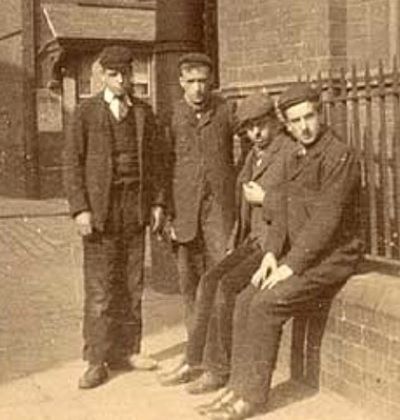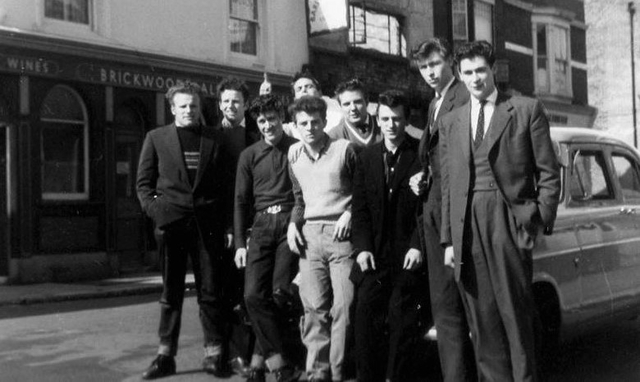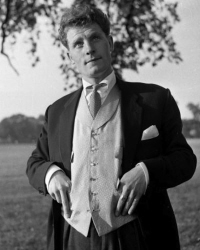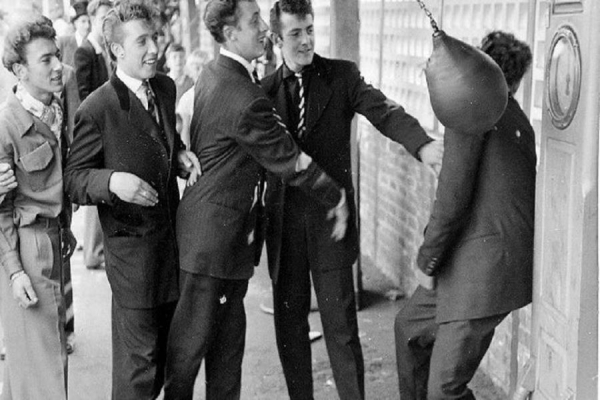Teddy Boys A Concise History – Ray Ferris and Julian Lord
Written by Matteo SedazzariYouth Culture was spawned after the Second World War, with Great Britain being the country of origin, and it has often been regarded that the Teddy Boys of the fifties were the first ones.
Yes, that is certainly true regarding post-war Britain. However, in the 1860s to 1890s in Manchester, a group of mid to late teenagers called themselves Scuttlers, who had a distinctive dress sense. Tilted peak caps to the left to display a long left fringe with short back and sides, known as the donkey fringe, dressed in bell-bottom trousers, wooden clogs with a colourful scarf tied around their necks. A uniform that was easily recognisable and struck in Salford (their abode) and who were admired for their confidence and Northern swagger. Some cite The Peaky Blinders from Birmingham, young men at the end of the 19th and early 20th Centuries. Like The Scuttlers in terms of dress sense, yet no longer with fringe, but instead a flat cap with razor blades stitched into the front, so the headwear doubles up as a lethal weapon, while The Scuttlers’ weapon of choice was heavy brass buckled belts.

Both these gangs had their dress sense, ethics codes, values, belief, and jargon that differed from mainstream society and had an average age of about 18. Therefore, from that point of view, they were a youth cult. However, both Scuttlers and The Peaky Blinders were territorial; you didn’t find Scuttlers in Liverpool or Peaky Blinders in Derby; they stayed in their environment. They may have been equivalent, but neither had a natural association with music, influenced by overseas culture (Italian clothes or American black music). The dress sense didn’t evolve; it was merely a uniform. Neither did their culture grow due to mass media hysteria, unlike The Teddy Boys, who made the Daily Mirror’s front page on 15th September 1953 with the iconic headline “Flick Knives Dance Music and Edwardian Suits.” Moreover, just over a week later, on 23rd September 1953, The Daily Express coined the term Teddy Boy as an abbreviation for Edwardian, and today The Teddy Boys are still going strong.
A concise history of The Teddy Boys is a reflective, inspiring, exciting, and intelligent book. Beginning in 1948, when upper and middle-class men started to wear Edwardian suits, the British Working Class decided to steal their look for their own and mix it into a post-war culture. In hindsight sounds easy, but no one (forget The Scuttlers and The Peaky Blinders) had ever done this before. Many myths are smashed that The Teddy Boys were born with the birth of rock ‘n’ roll - no, they were going before that. It’s just that they embraced it and made it their own, as it fitted their agenda of being young, carefree, and having a good time.

Ferris and Lord pay attention to the clothes of the Teds, how they rapidly changed with each year, and the next generation’s take on it, how chukka boots were the shoes of choice in 1953 before the crepe sole. Their love of Westerns is how the bootlace tie came about; actor Tony Curtis’s haircut was a style they all wanted to emulate, and much more.
Furthermore, the social and economic climate is explained in detail, how the Teds were forged as a product of social change, while their distant cousins, The Spivs, were a product of economic circumstance. In addition, the authors also reflect on the media’s influence on the movement and how society will create an internal threat when an external threat is not available, a minority group, for the rest to fear and loathe. In the 1950s, it was The Teddy Boys, and many, sadly, have followed ever since.
A worthy read that will wake up the rebel in your soul.

Matteo Sedazzari
Latest from Matteo Sedazzari









